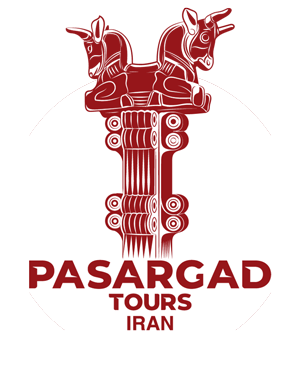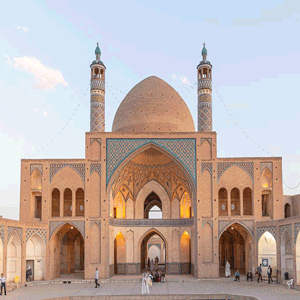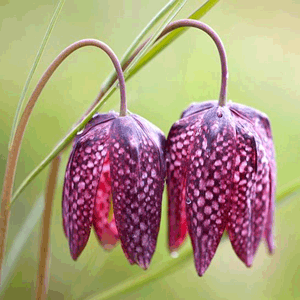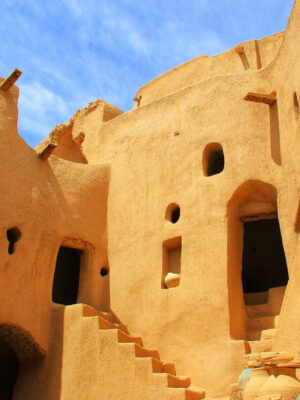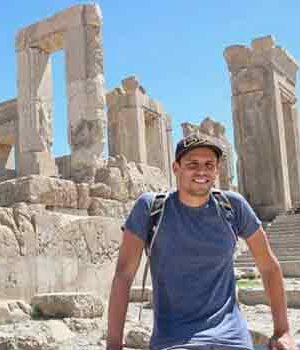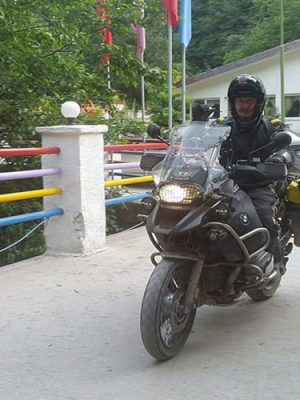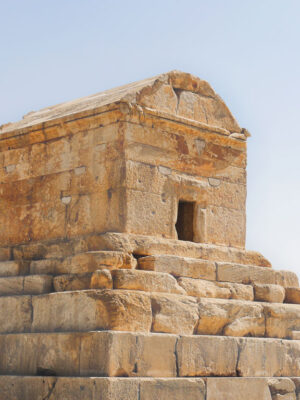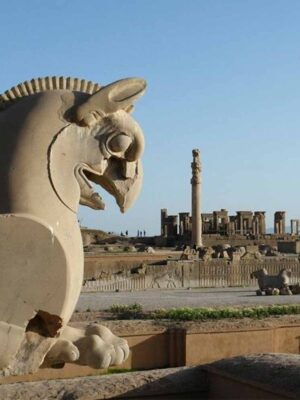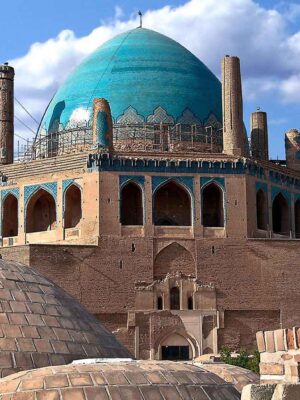Pasargadae
Pasargadae is located in the plain of Marvdasht, also known as the plain of the Mother of Solomon, near the city of Shiraz. It is an archaeological site which counts as one of the most important attractions in Iran. It was the first capital of the Achaemenid Empire under the rule of Cyrus the Great (559–530 B.C.) and houses the tomb of this great king. Since the beginning of Renaissance in Europe, European explorers and travelers such as the Venetian Giosafat Barbaro have visited Pasargadae and according to him, the tomb of Cyrus was then named the ‘Tomb of the Mother of Solomon’.

Pasargadae was excavated by the German archeologist Ernst Herzfeld in 1905 and again in 1928, together with his assistant, Friedrich Krefter. Less than four decades later, from 1961 to 1963, the British Institute of Persian Studies undertook extensive excavations in Pasargadae that were led by professor David Stronach. Pasargadae is a unique UNESCO World Heritage Site and consists of Pasargadae Garden and Pasargadae Palace. The 160-hectare archeological remains of Pasargadae and the garden layout, as well as the tomb of Cyrus the Great, represent Persian architecture and are a testimony to the great Achaemenid civilization in Persia. The features of their multicultural architecture left an astonishing architectural legacy starting with the construction of the tomb of Cyrus the Great in Pasargadae to the spectacular structures made in the ceremonial city of Persepolis.
The tomb or mausoleum of Cyrus the Great which was built around 540-530 B.C. still stands in Pasargadae. The simple, yet beautiful limestone stepped edifice has six broad steps (reminiscent of the Mesopotamian Ziggurats) leading to a tomb chamber measuring 3.17 meters long by 2.11 meters wide and 2.11 meters high that has a low and narrow entrance. The upper part of the structure has a sloping ceiling. It is believed that when Alexander destroyed Persepolis he visited the tomb of Cyrus, inside which was a golden bed, a table with drinking vessels, a gold coffin and an inscription inside the tomb. Strabo reports that the inscription read: Passerby, I am Cyrus, who gave the Persians an empire, and was king of Asia. Grudge me not therefore this monument.
Cyrus the Great’s tomb was broken into and the precious items in it were looted. The site of Pasargadae includes the Mausoleum of Cyrus the Great, the royal ensemble of the Gatehouse or Gateway Palace, the Audience Palace, Residential or Private Palace, and the Royal Four Garden. There is also a ruined compound which is known by the name ‘Prison of Solomon’ and is assumed to be the tomb of Cambyses, son of Cyrus the Great.
Pasargadae
Pasargadae is located in the plain of Marvdasht, also known as the plain of the Mother of Solomon, near the city of Shiraz. It is an archaeological site which counts as one of the most important attractions in Iran. It was the first capital of the Achaemenid Empire under the rule of Cyrus the Great (559–530 B.C.) and houses the tomb of this great king. Since the beginning of Renaissance in Europe, European explorers and travelers such as the Venetian Giosafat Barbaro have visited Pasargadae and according to him, the tomb of Cyrus was then named the ‘Tomb of the Mother of Solomon’.

Pasargadae was excavated by the German archeologist Ernst Herzfeld in 1905 and again in 1928, together with his assistant, Friedrich Krefter. Less than four decades later, from 1961 to 1963, the British Institute of Persian Studies undertook extensive excavations in Pasargadae that were led by professor David Stronach. Pasargadae is a unique UNESCO World Heritage Site and consists of Pasargadae Garden and Pasargadae Palace. The 160-hectare archeological remains of Pasargadae and the garden layout, as well as the tomb of Cyrus the Great, represent Persian architecture and are a testimony to the great Achaemenid civilization in Persia. The features of their multicultural architecture left an astonishing architectural legacy starting with the construction of the tomb of Cyrus the Great in Pasargadae to the spectacular structures made in the ceremonial city of Persepolis.
The tomb or mausoleum of Cyrus the Great which was built around 540-530 B.C. still stands in Pasargadae. The simple, yet beautiful limestone stepped edifice has six broad steps (reminiscent of the Mesopotamian Ziggurats) leading to a tomb chamber measuring 3.17 meters long by 2.11 meters wide and 2.11 meters high that has a low and narrow entrance. The upper part of the structure has a sloping ceiling. It is believed that when Alexander destroyed Persepolis he visited the tomb of Cyrus, inside which was a golden bed, a table with drinking vessels, a gold coffin and an inscription inside the tomb. Strabo reports that the inscription read: Passerby, I am Cyrus, who gave the Persians an empire, and was king of Asia. Grudge me not therefore this monument.
Cyrus the Great’s tomb was broken into and the precious items in it were looted. The site of Pasargadae includes the Mausoleum of Cyrus the Great, the royal ensemble of the Gatehouse or Gateway Palace, the Audience Palace, Residential or Private Palace, and the Royal Four Garden. There is also a ruined compound which is known by the name ‘Prison of Solomon’ and is assumed to be the tomb of Cambyses, son of Cyrus the Great.




